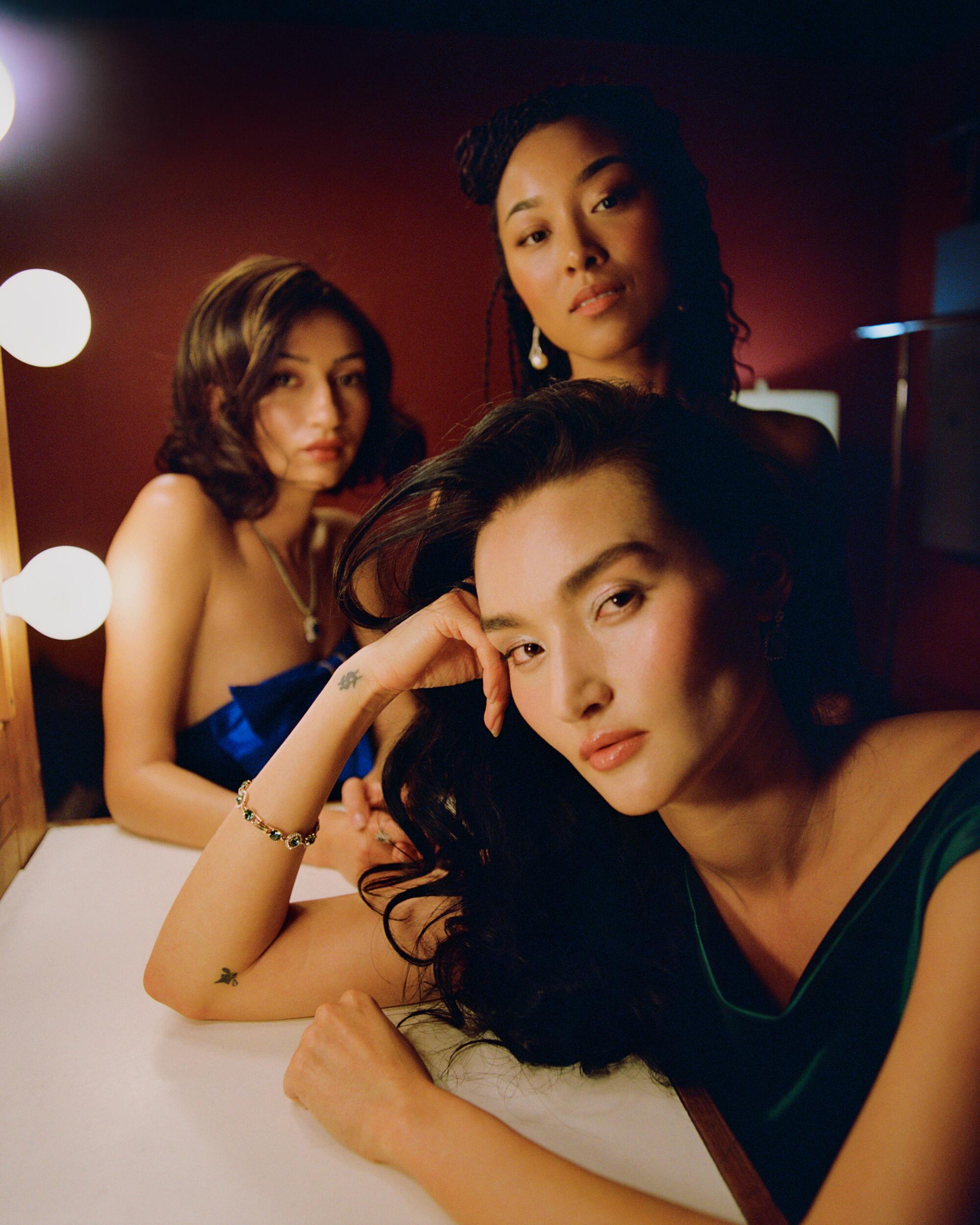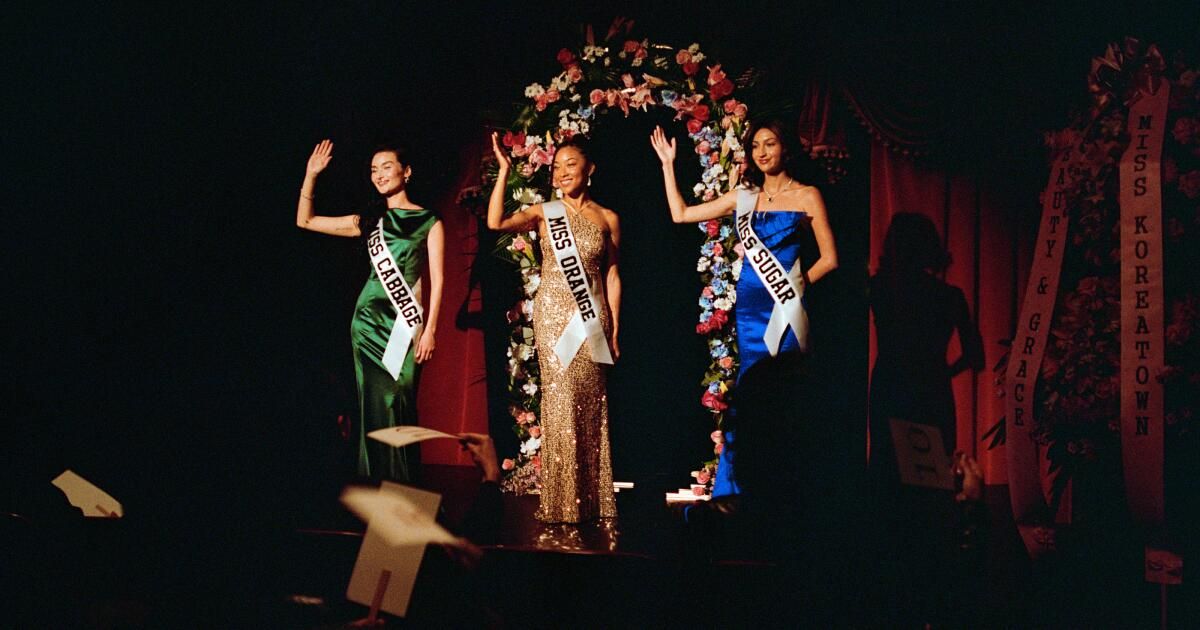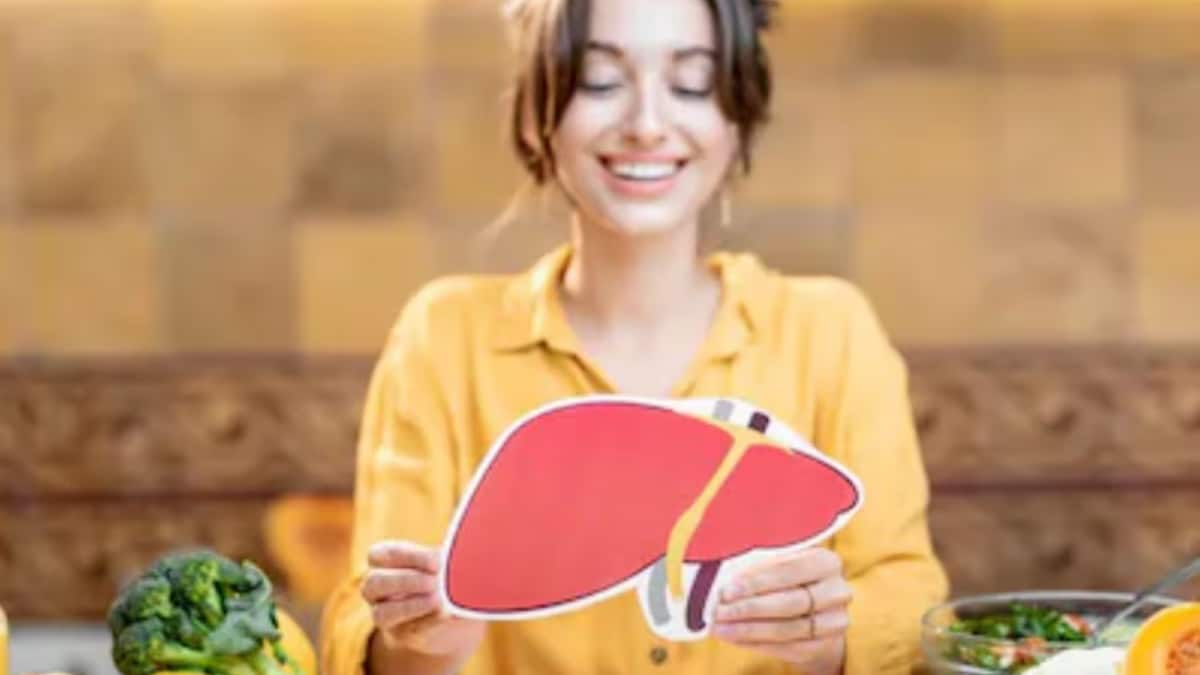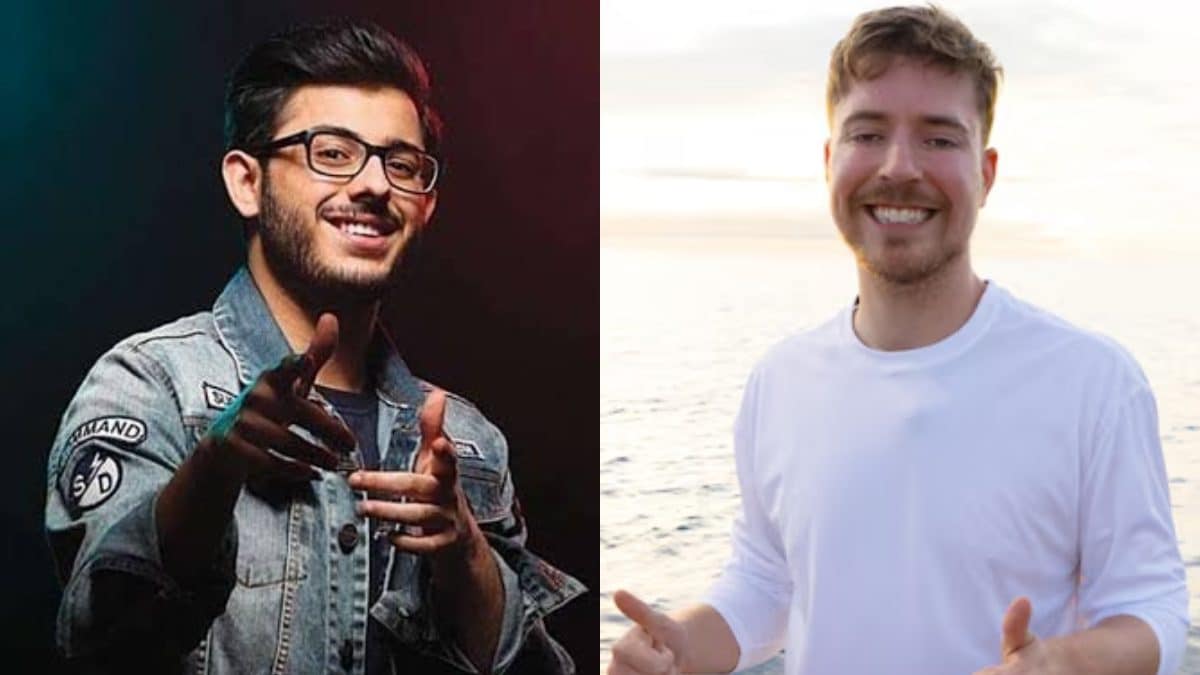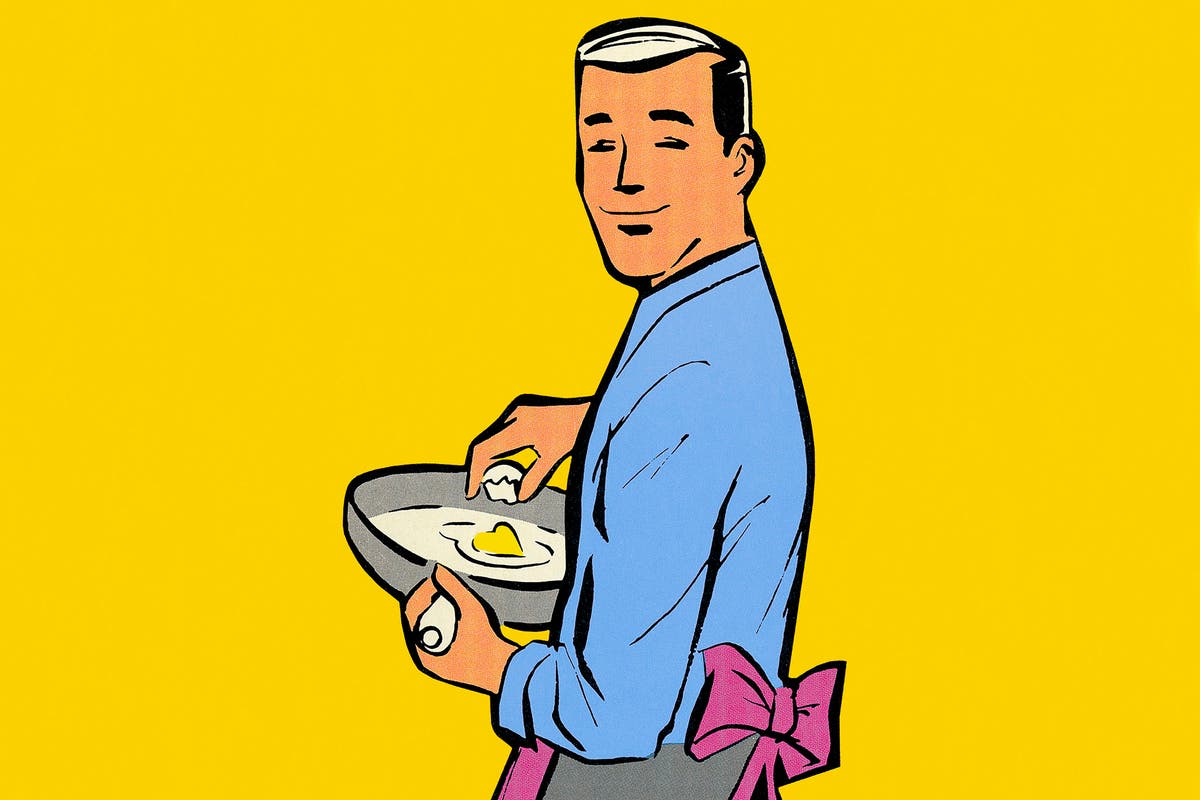Since the beginning of 2022, photographer Emanuel Hahn has been working on his series “American fever,” in which she recreates and reimagines the stories of Korean immigrants in the U.S. during the 20th century. Her first series, “Jultagi,” used the Korean tightrope walker as a metaphor for the immigrant experience. Other series have explored the love of immigrants, the ways Koreans adopted American lifestyles, such as car and motorcycle culture. Her latest series, “Miss Koreatown,” dives into the history of beauty pageants in Los Angeles’ Koreatown. In this as-told interview, Hahn shares the backstory.
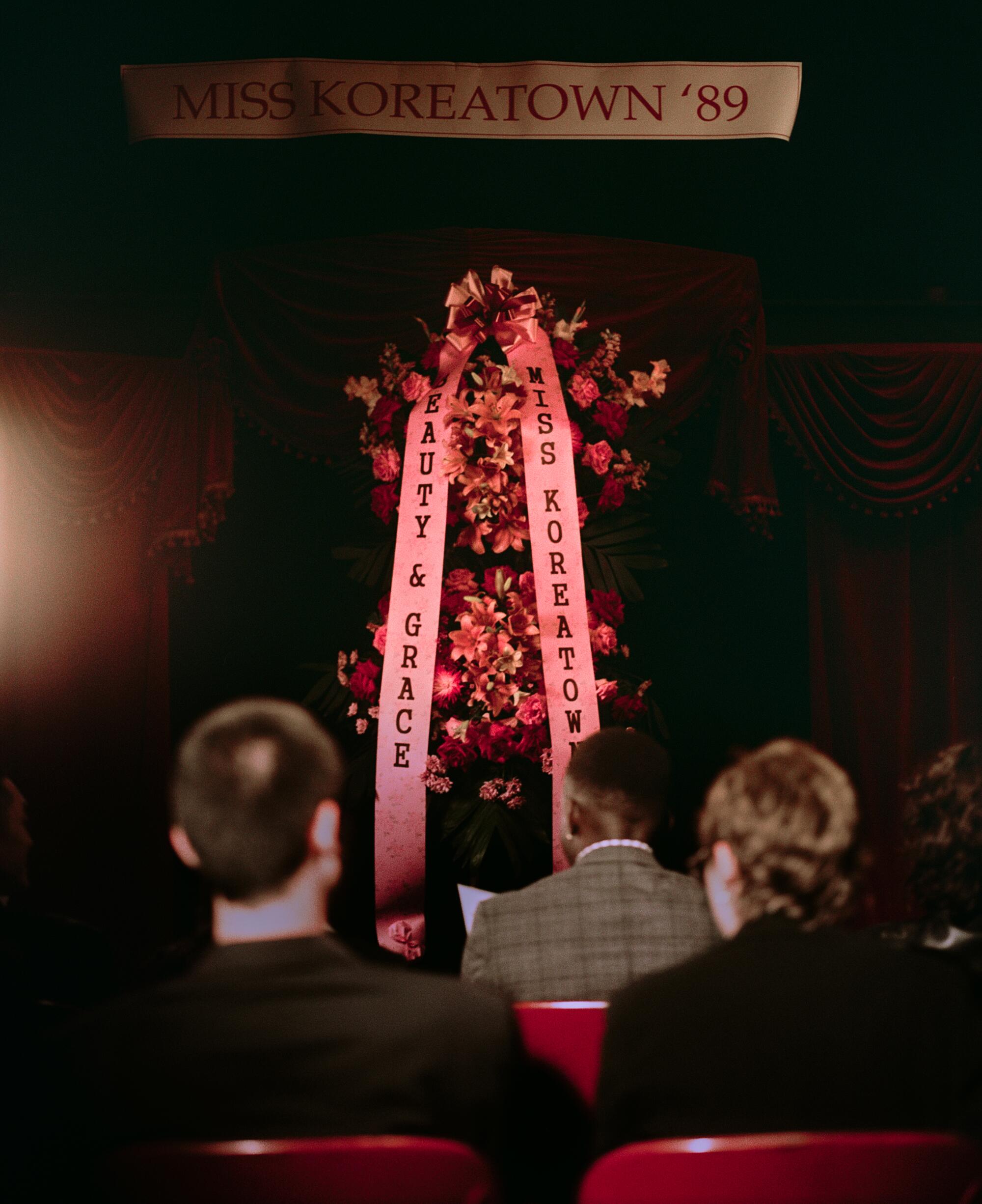
“America Fever” is a photo and video series that combines a lot of Korean stories and cultural motifs with the myth of the American West. It was an idea that was always present in my mind as a third-culture kid growing up in Singapore and Cambodia and all these other places that weren’t my birth country or my mother’s country, which are the United States and Korea, respectively. I was trying to find my own sense of Korean identity, and that led me to become very interested in Korean history, folklore, and traditional elements that I wasn’t familiar with. When I moved to the United States, there was that added element of being Korean and American, but also not having spent time in South Korea or the United States until I was in my 20s. It was at the same time an effort to reclaim my Korean heritage and make sense of my new Korean-American identity.
I think the staged narrative component came about because I was so intrigued by staged narrative photographers like Gregory Crewdson and Alex Prager. There was something intriguing about building a scene to get your ideas across and building a world so you could create this universe that was entirely your own. I made four or five images in early 2023 for a group show in New York on a Google grant, and then I continued making images on my own. This year, I made this piece “Miss Koreatown.” The series follows an arc, it’s almost like a curve that goes up and then down: it’s the arrival of immigrants, then the struggle, then the joys and the ecstasies, but also the recognition of what it is to be Asian American in this time, that, yes, there is integration, but there’s also a lot of otherness and wondering if there’s a place for you.
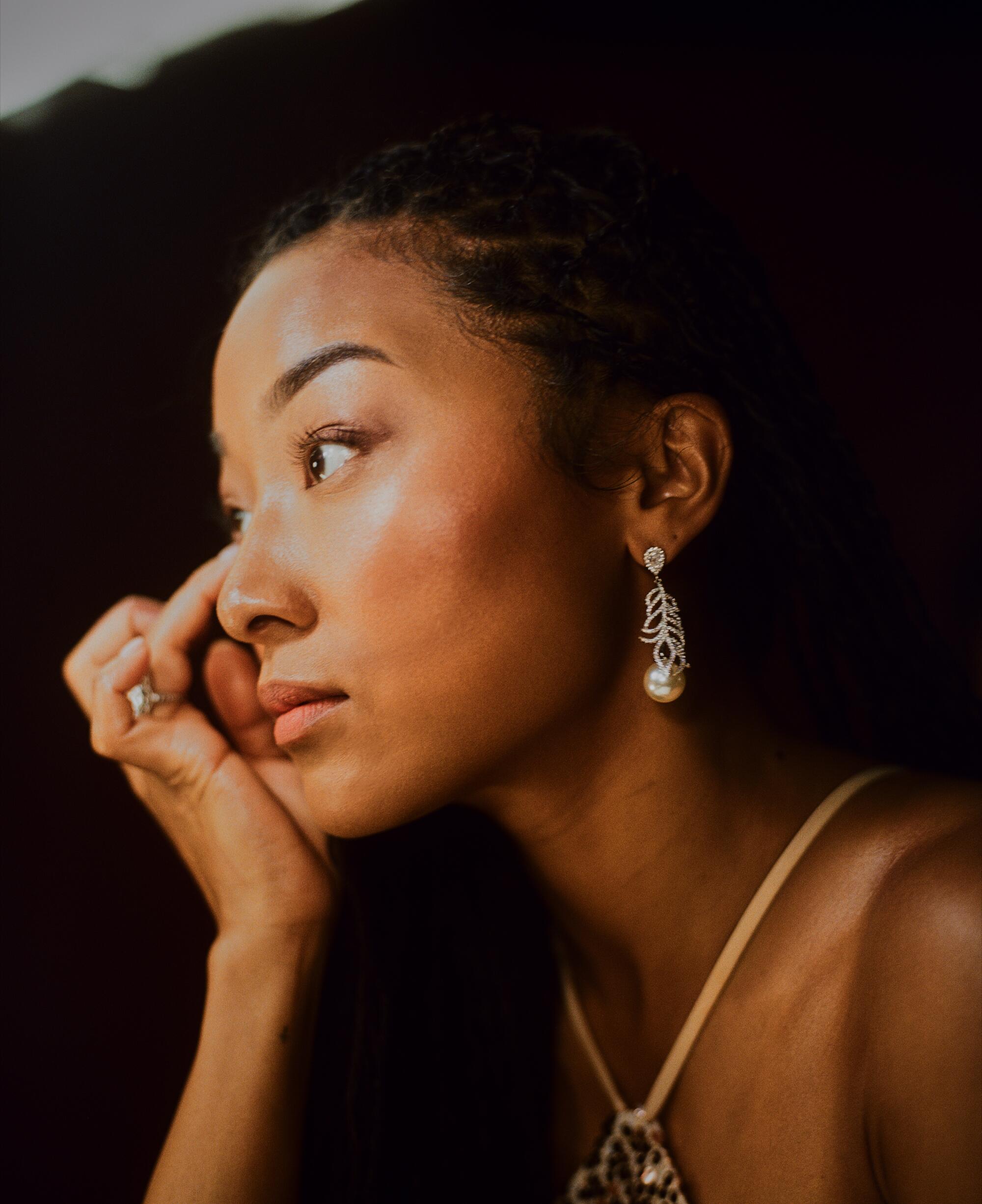
Blair is wearing a vintage 18k white gold Edwardian diamond ring from IO Collective, private collection and vintage pearl earrings from Julia Vaughn.
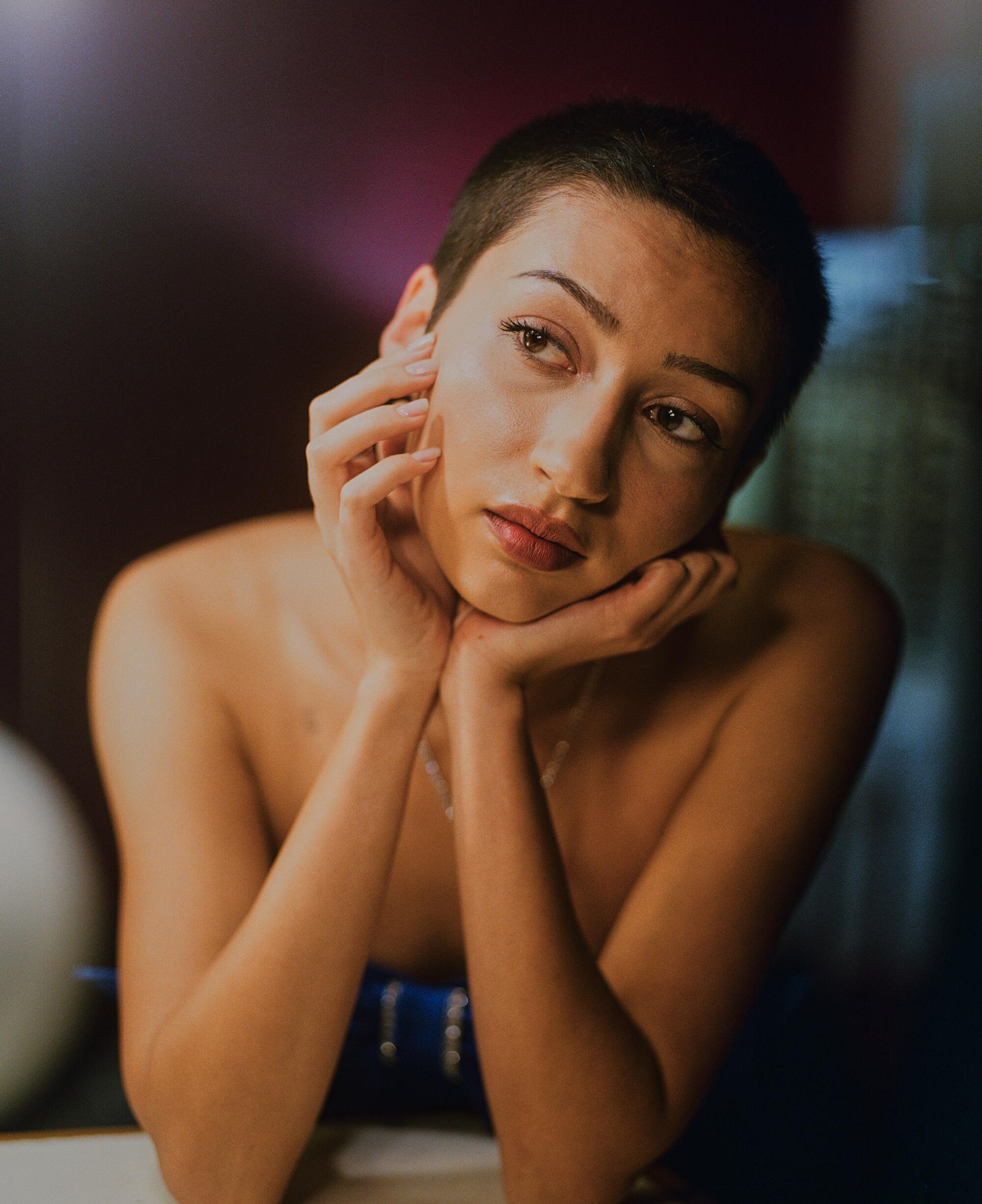
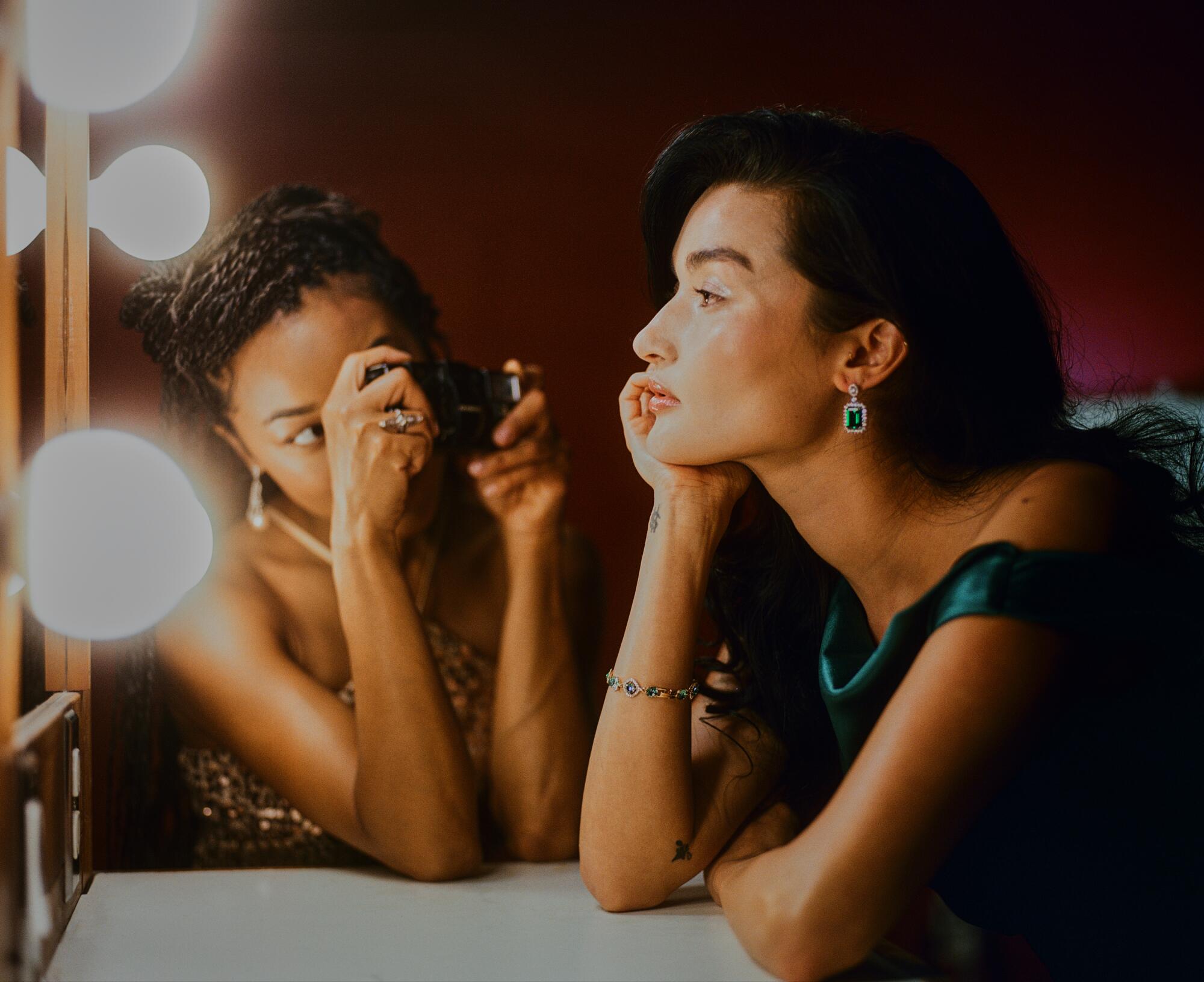
Minji is wearing vintage Swarovski emerald earrings and a vintage Julia Vaughn emerald bracelet.
The beauty pageant is in that joyous, ecstatic phase, but with an asterisk, because I keep complicating the idea of the beauty pageant by using mixed-race contestants. They’re all part Korean: Minji is white and Korean, Blair is black and Korean, and Ari is Puerto Rican and Korean. Mixed-race Koreans have historically been marginalized in Korean culture, and in the U.S. less so, but still, there was a sense that they didn’t really feel like they were part of either culture. If you were black and Korean in postwar Korea, you had a very hard life, because there was racism against Koreans, both from American soldiers and from Korean culture. The beauty pageant is a celebration of being Korean, but it’s also redefining what beauty is in the context of many Korean beauty pageants, which often favor super-pale, porcelain skin. I've basically changed the context to Los Angeles, which is one of the most diverse places on Earth, and just the fact that, in Los Angeles, we have room for diversity.
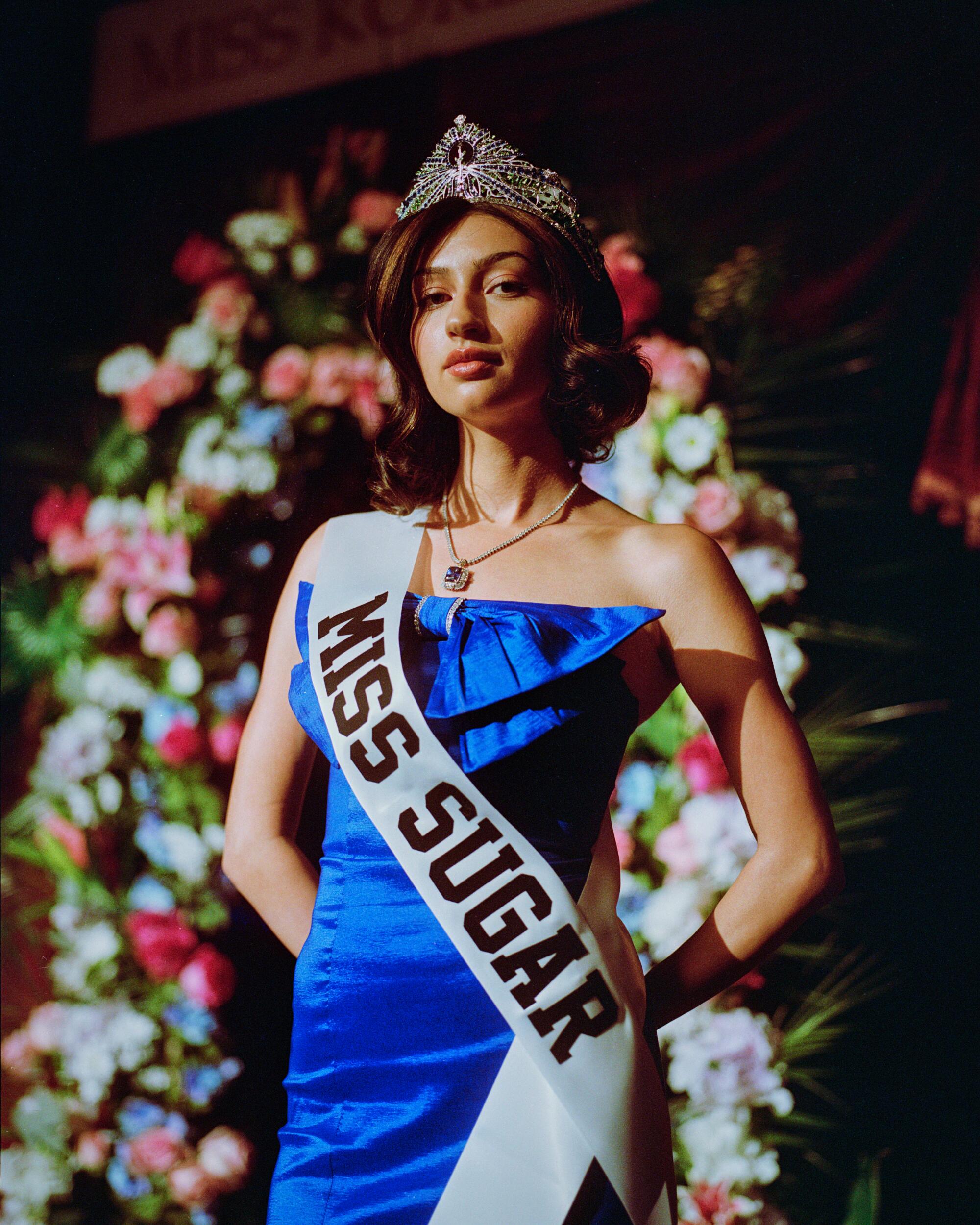
Ari is wearing an 18-carat white gold diamond tennis necklace with a 20-carat tanzanite diamond pendant.
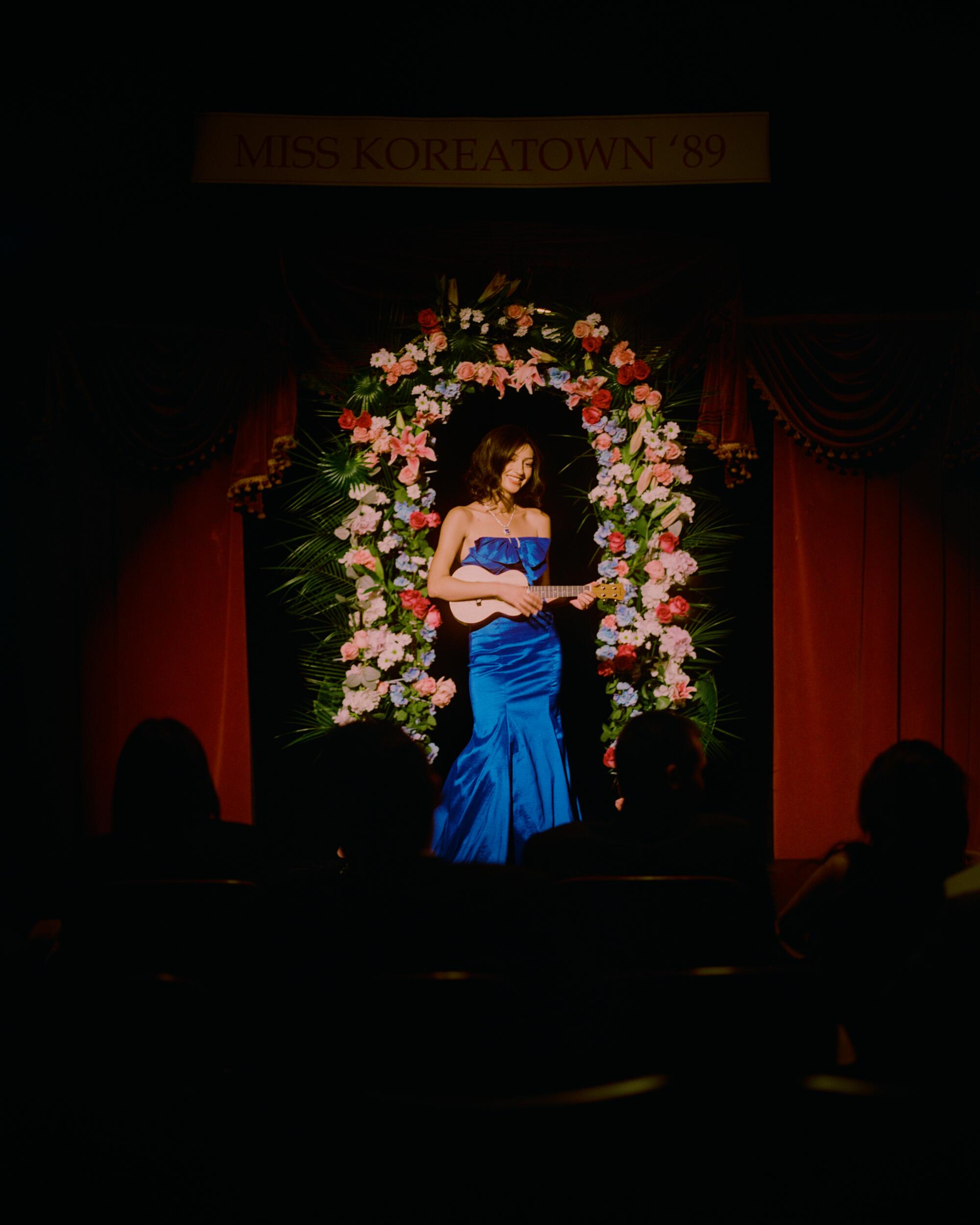
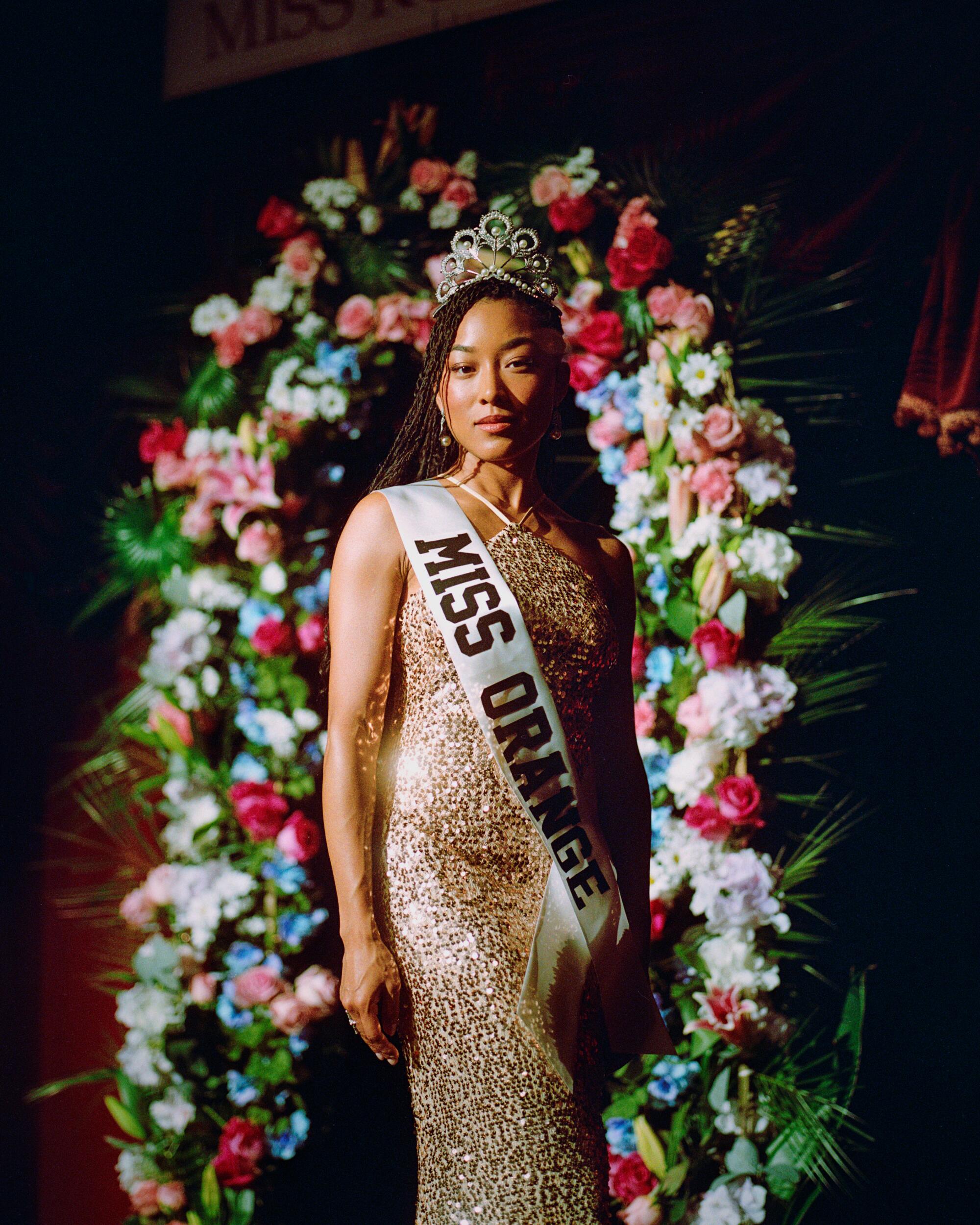
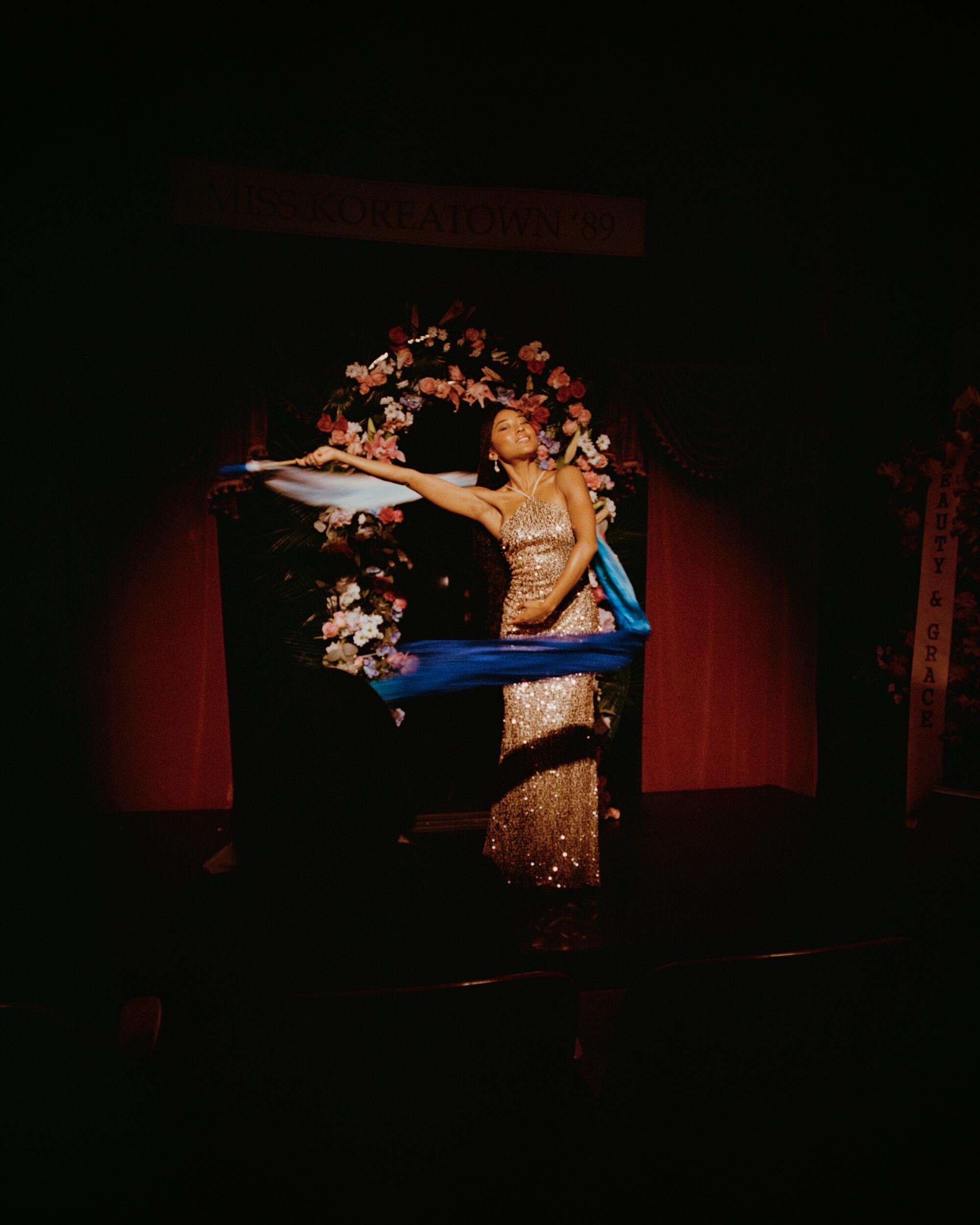
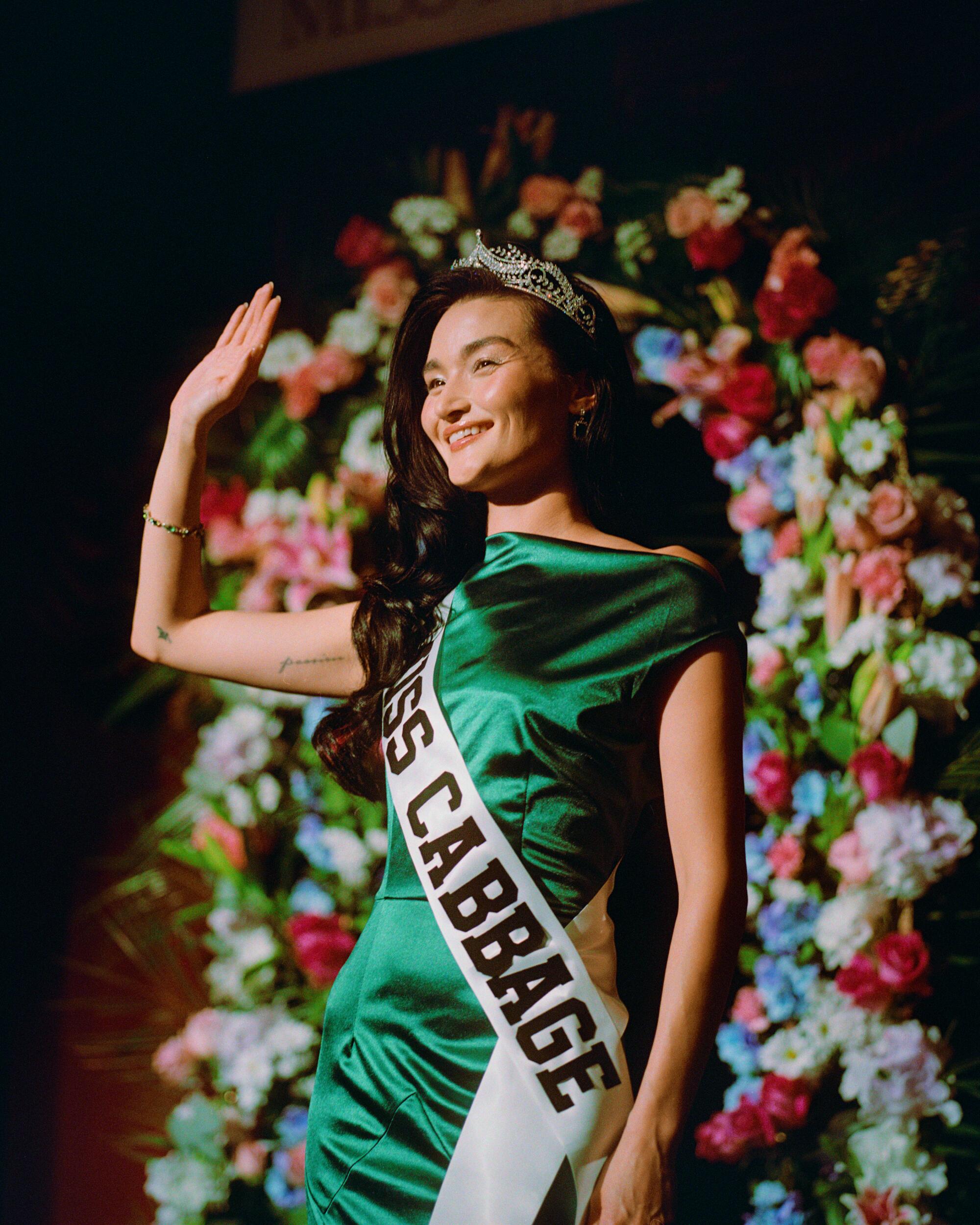
The little bags also reference the stages of immigration: Miss Sugar refers to the sugar plantations in Hawaii, which was one of the first destinations for Korean workers. And then from there, a lot of the workers moved to California, where they worked on citrus plantations, so that's Miss Orange. Then Miss Cabbage is this later group, where Korean immigrants came in the '70s and wanted to make kimchi, so they started growing more cabbage. I'm using costume details and props to nod to Korean history.
There used to be a lot of Korea Day celebrations. There were beauty pageants, as well as a parade in Koreatown in the 80s and 90s. A lot of this was put on by different institutions within Koreatown and small businesses to celebrate Korean culture and heritage. It was one of the few times that the community came together to simply celebrate their identity. I think it had the effect of sharing Korean culture with the rest of America, because in the 80s or 90s, a lot of Americans didn’t know anything about Korea outside of the context of the Korean War. That was the first time people heard or learned about hanbok, which is Korean dress, or Korean food. It was a way for people in Koreatown to share their stories, and then along with that, there were the Miss Koreatowns.
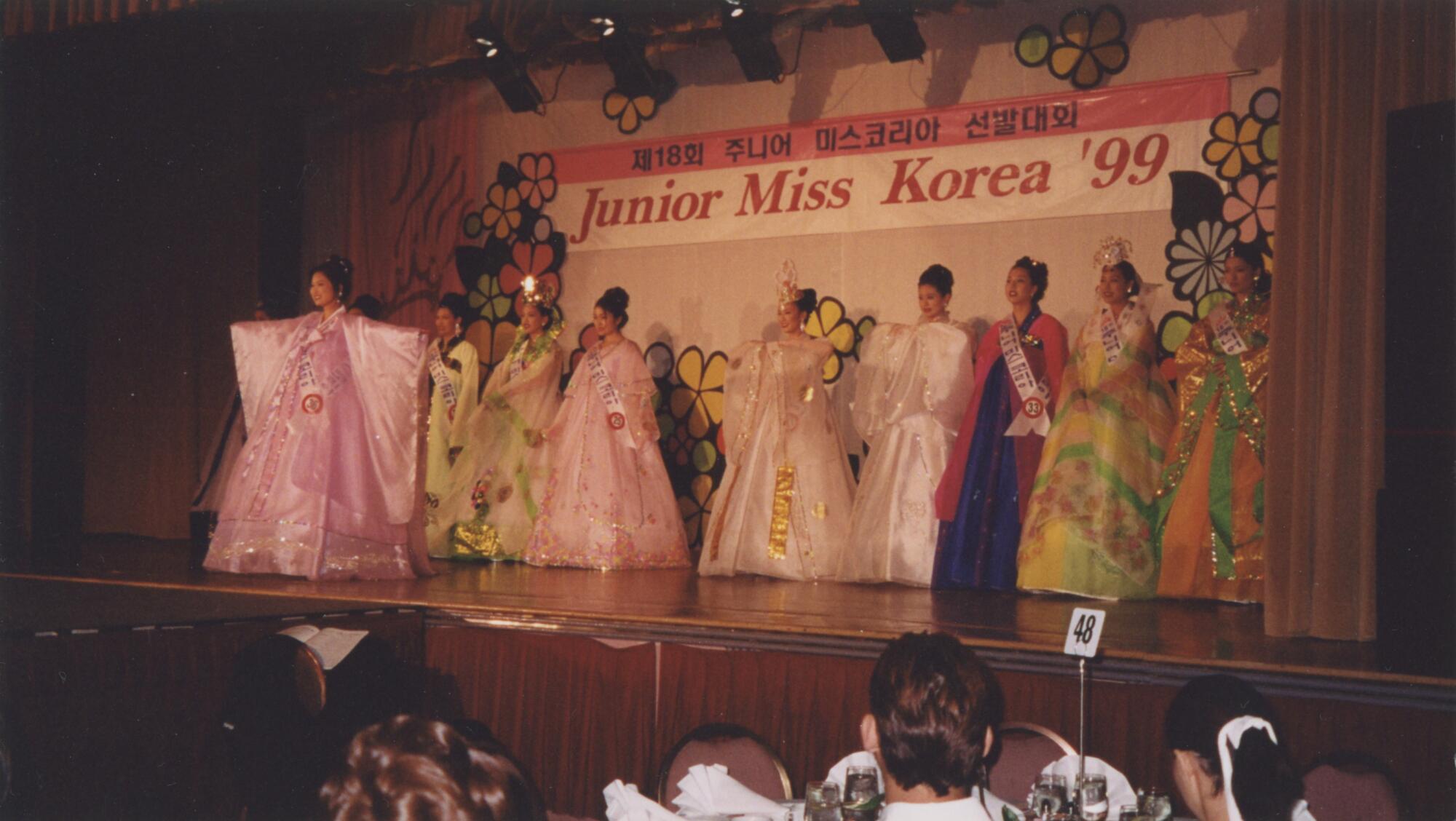
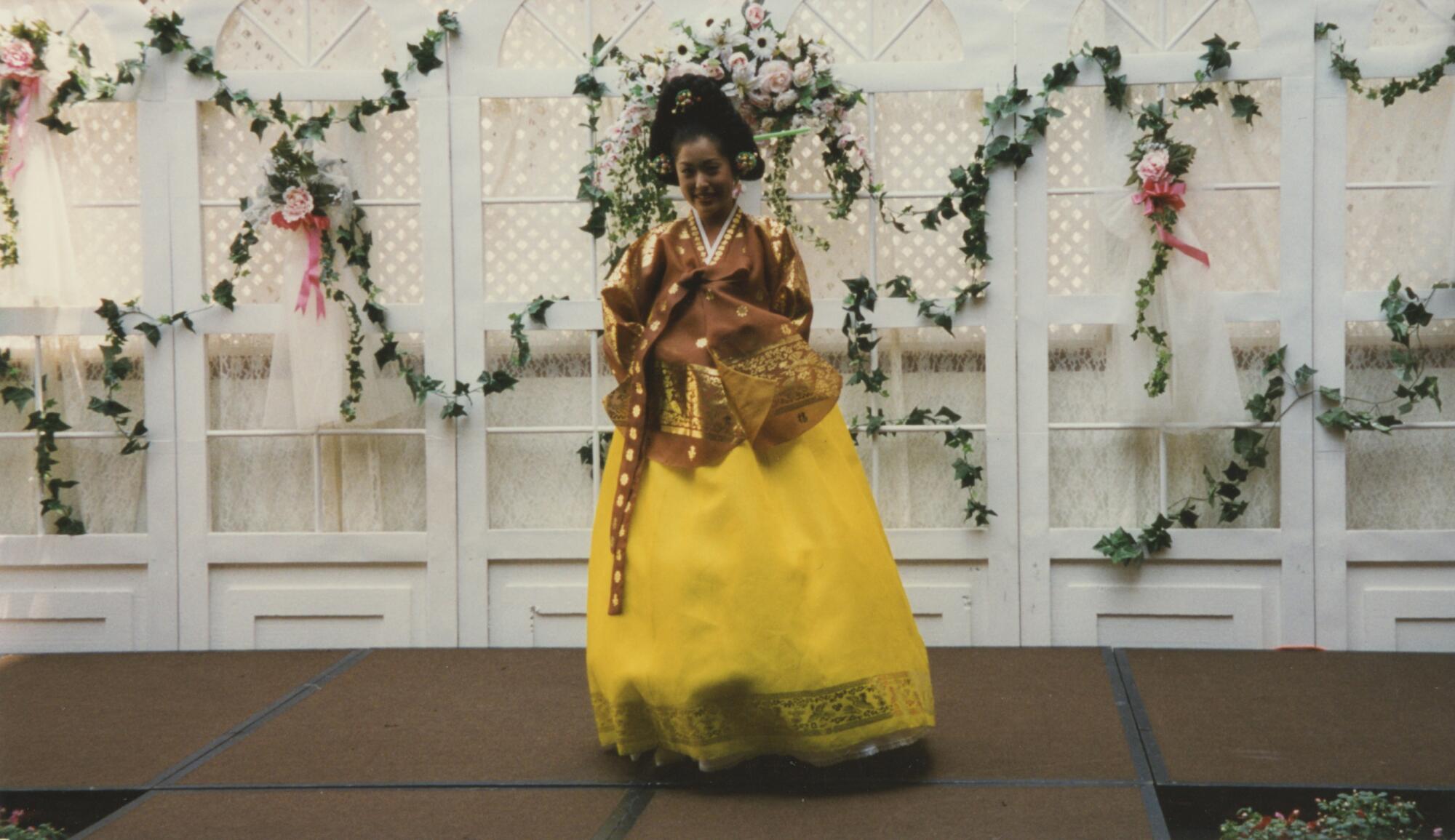
(Courtesy of Leehwa Weddings & Hanbok)
It's really hard to find images, but I saw some when I asked small business owners who had archival photos and searched online. Miss Koreatown pageants used to be very small ventures. It wasn't anything grand, and there was something so do-it-yourself about them that I found really endearing. There were also Miss California pageants, where there were different contestants who came from Northern and Southern California, from San Luis Obispo and all over California, and they would gather in Koreatown. I thought that was really cool because it spoke to the diversity of Korean experiences even within California. This is a part of Koreatown history that hasn't been well archived or shared. I wanted to talk about it a little bit and put my cultural history lens on it.
—As told to Elisa Wouk Almino
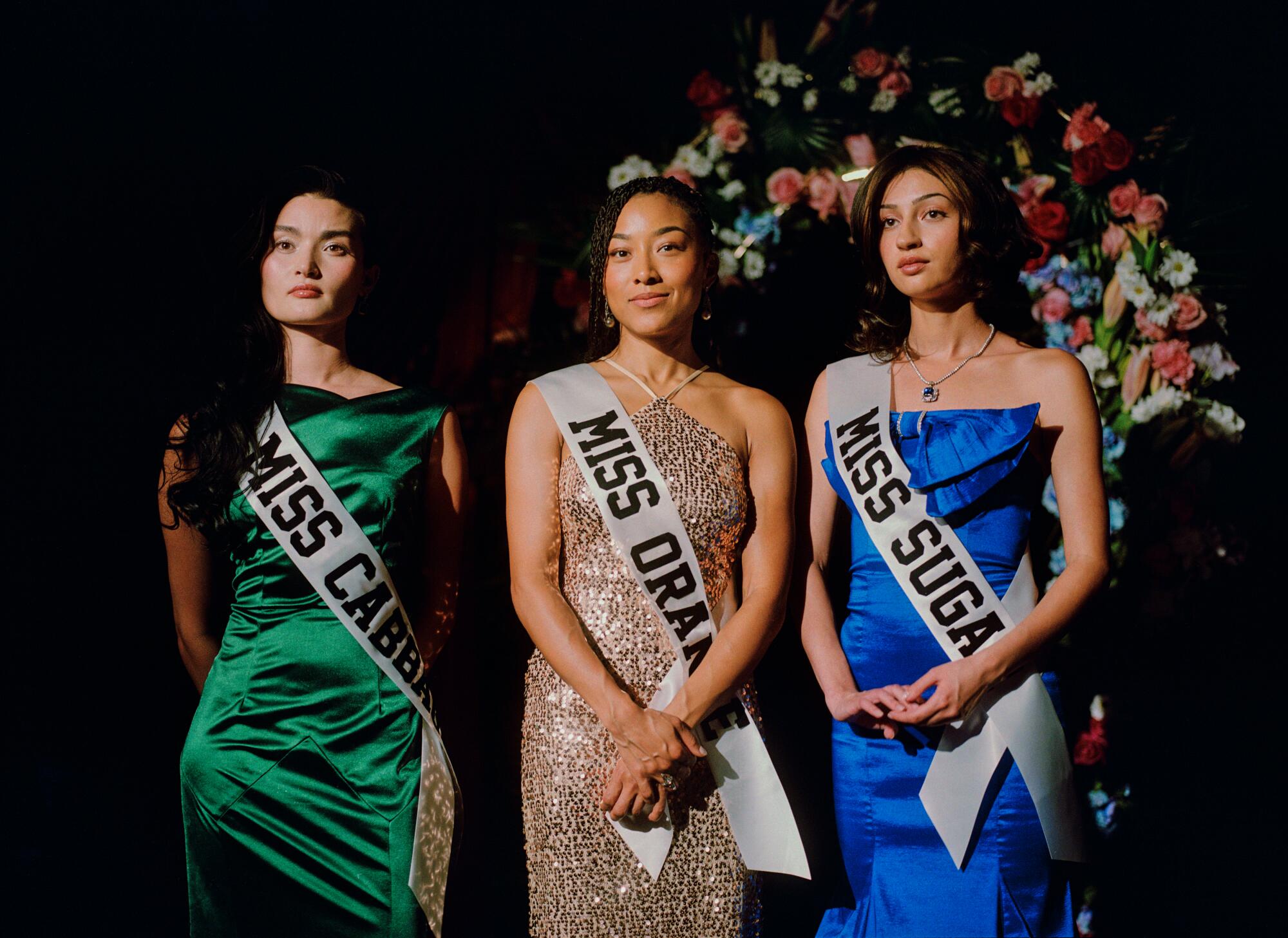
Minji, Blair and Ari wear vintage dresses.
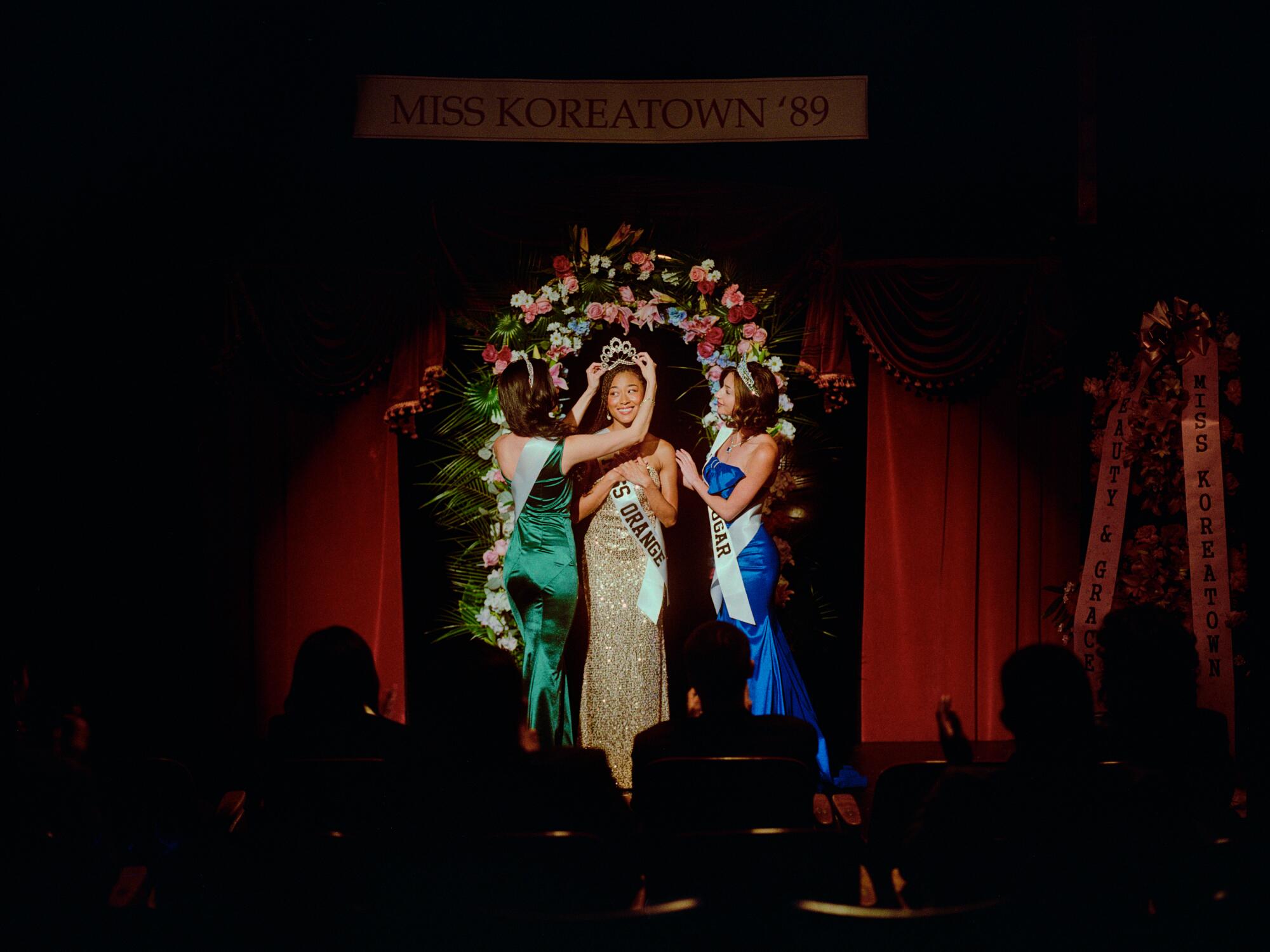
Photography and production Emanuel Hahn
Models Blair Kim, Minji Marie, Ari Rivera
Cupboard Juliet Vo
Scenario design Victoria Foraker
Photography Assistant Carly Hildebrant
Wardrobe Assistant Paige The Violet
Make up Daphne Chantel Del Rosario
Hair James Gilbert
Production Coordinator Crystal Rivera
Retoucher Jamie Kang
Stock photos courtesy of Leehwa Weddings & Hanbok
